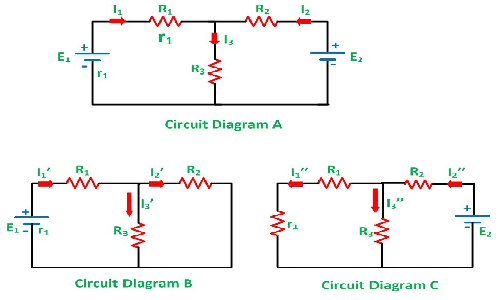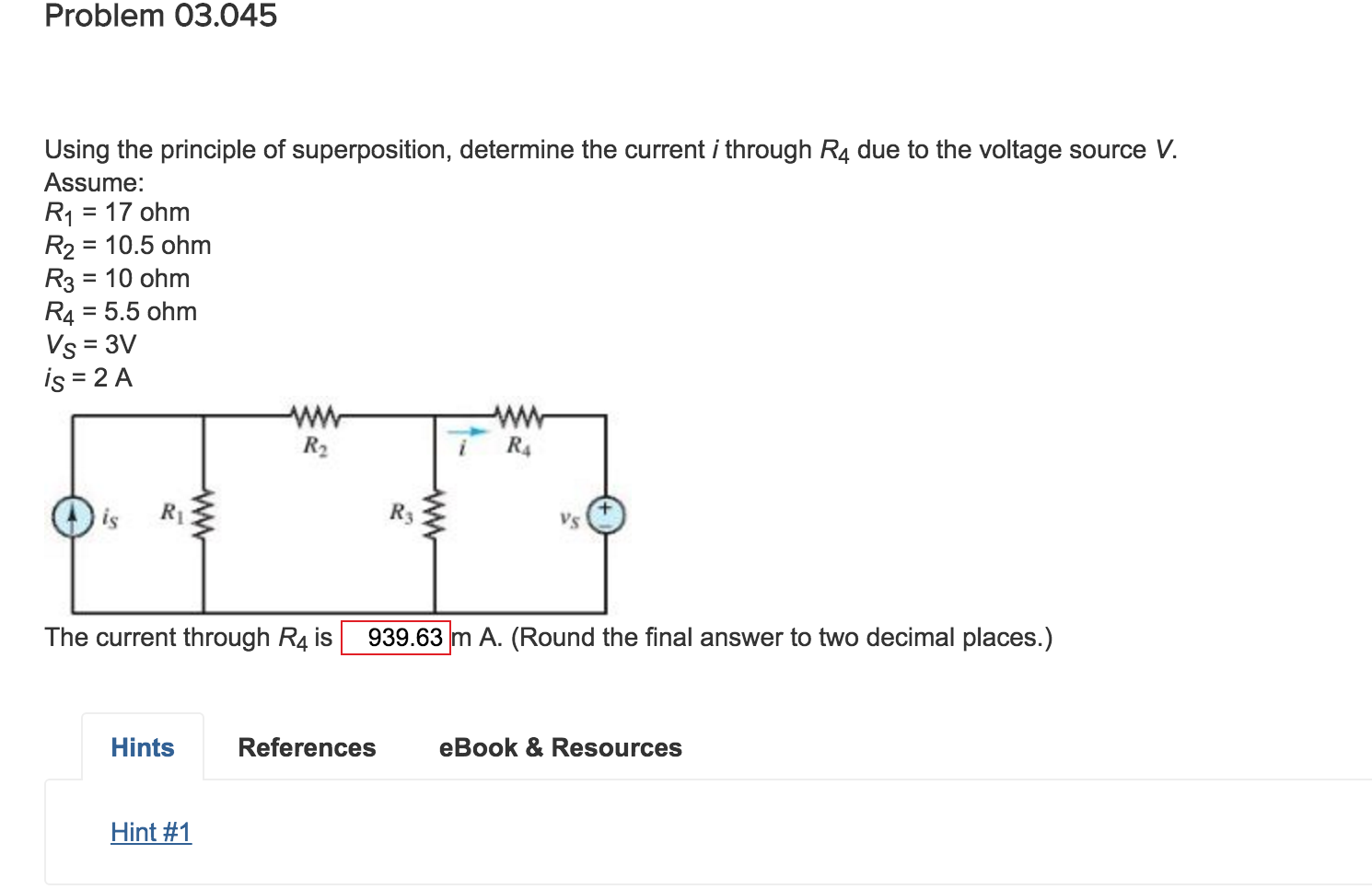

Step-1 Find out a number of independent sources available in the network. Steps to Follow for Superposition Theorem But we cannot find the power dissipated from the element. With the help of the superposition theorem, we can find the current passes through an element, voltage-drop of resistance, and node voltage.It means, the magnitude of the current is independent of the polarity of energy sources. The circuit components must be bilateral elements.

But the diode, transistor is not a linear element. Therefore, the resistor, inductor, and capacitor are linear elements. It means, for resistors, the flow of current is proportional to the voltage for inductors, the flux linkage is proportional to current.

The components used in the circuit must be linear.The network must follow the below requirements to apply the superposition theorem. The superposition theorem is only applied to the circuit which follows Ohm’s law. If the internal resistance of sources is given, you need to consider the circuit. The voltage sources are short-circuited and the current sources are open-circuited for ideal sources. In other words, we will consider only one independent source acting at a time. While other sources are eliminated from the circuit.” “In any linear bilateral network having a greater number of sources, the response (voltage and current) in any element is equal to the summation of all responses caused by individual source acting alone. And combine the effect of all sources to get the actual voltage and current of the circuit element. It is an important concept to determine voltage and current across the elements by calculating the effect of each source individually. The Superposition Theorem is used to solve complex networks with a number of energy sources. Steps to Follow for Superposition Theorem.(This is a “toy” example to give you a feel for superposition. Refresh me on the scaling property and linearity. The linearity property is what lets us use superposition to help solve a circuit. The output, $i$, equals the input, $v_i$, scaled by a constant, $\text R$. Looking at our resistor function, we see it has the scaling property. With this notation, we are viewing the resistor as a function that takes in a voltage and outputs a current. The output of our function will be the current, $i$, measured by some not-shown current meter.įunction: The function itself comes from the resistor, described by Ohm’s Law. For this function, we choose the output to be the current $i$. Output: We assign the output to be the interesting thing we want to know. The input voltage is applied to the two small circles (the circles indicate the input port to our function). Assume input $v_i$ is generated by some voltage source we’re not showing. Input: We decide (arbitrarily) that voltage $v_i$ will be the input of our resistor function. We just talk about Ohm’s Law using function terminology.īegin by identifying three things: the inputs, outputs, and the thing performing the function. Start simply… How might we represent a lone resistor using functional notation? There’s nothing remarkable going on here. You used functional notation in algebra class when you wrote something like $f(x) = 2x + 3$. The principle of superposition uses functional notation, so we talk a bit here about how circuits can be represented as functions. The final result is the sum of individual results. Next, you analyze two (or more) much simpler circuits. To suppress a current source, replace it with an open circuit. To suppress a voltage source, replace it with a short circuit. To solve a circuit using superposition, the first step is to turn off or suppress all but one input. The principle of superposition is another name for the additivity property of Linearity, Solve using the principle of superposition.Superposition works because of linearity. Use it when your circuit has multiple inputs or power sources.īefore reading this article, I recommend you review the concept of Linearity. Superposition is a superpower to add to your toolkit of circuit analysis methods.


 0 kommentar(er)
0 kommentar(er)
